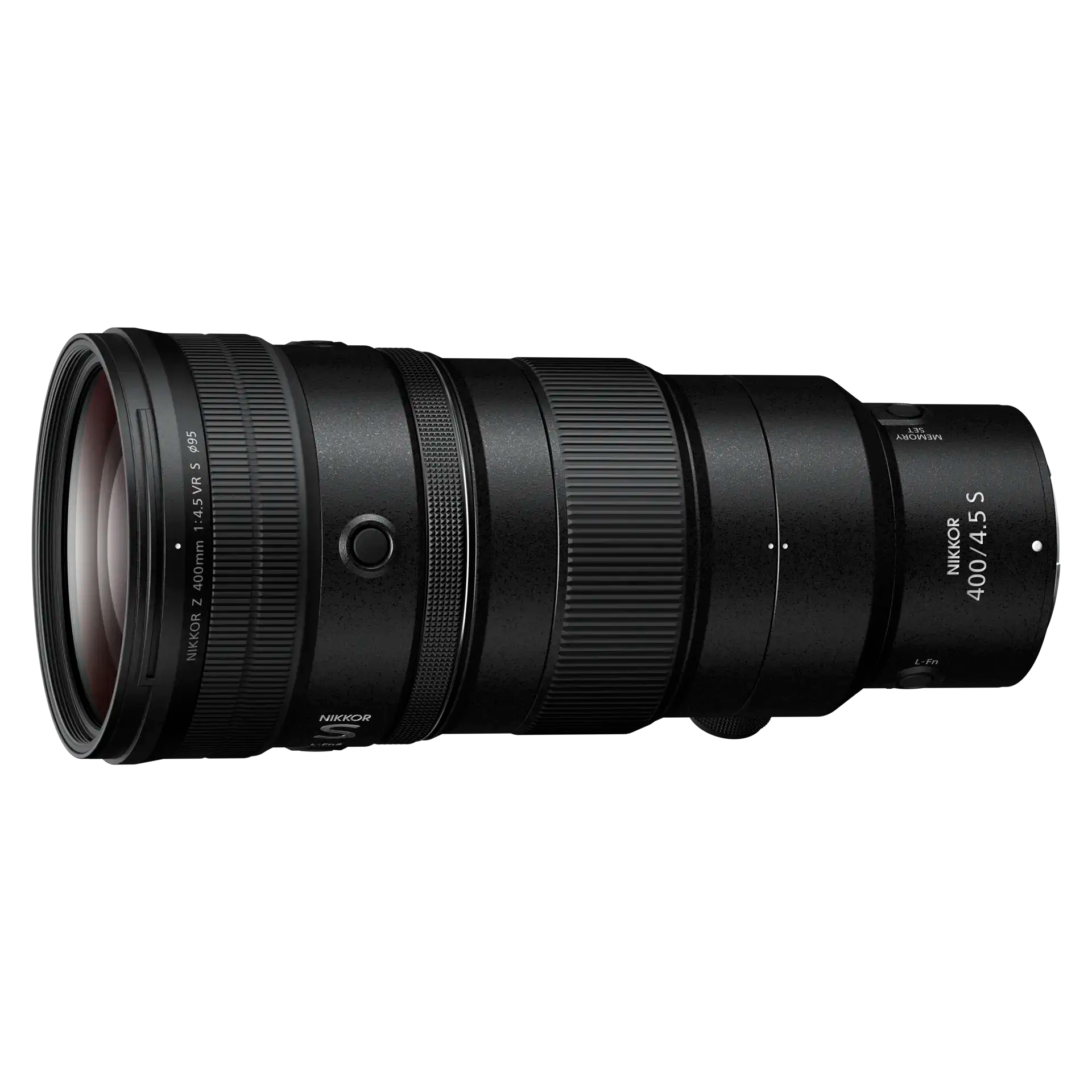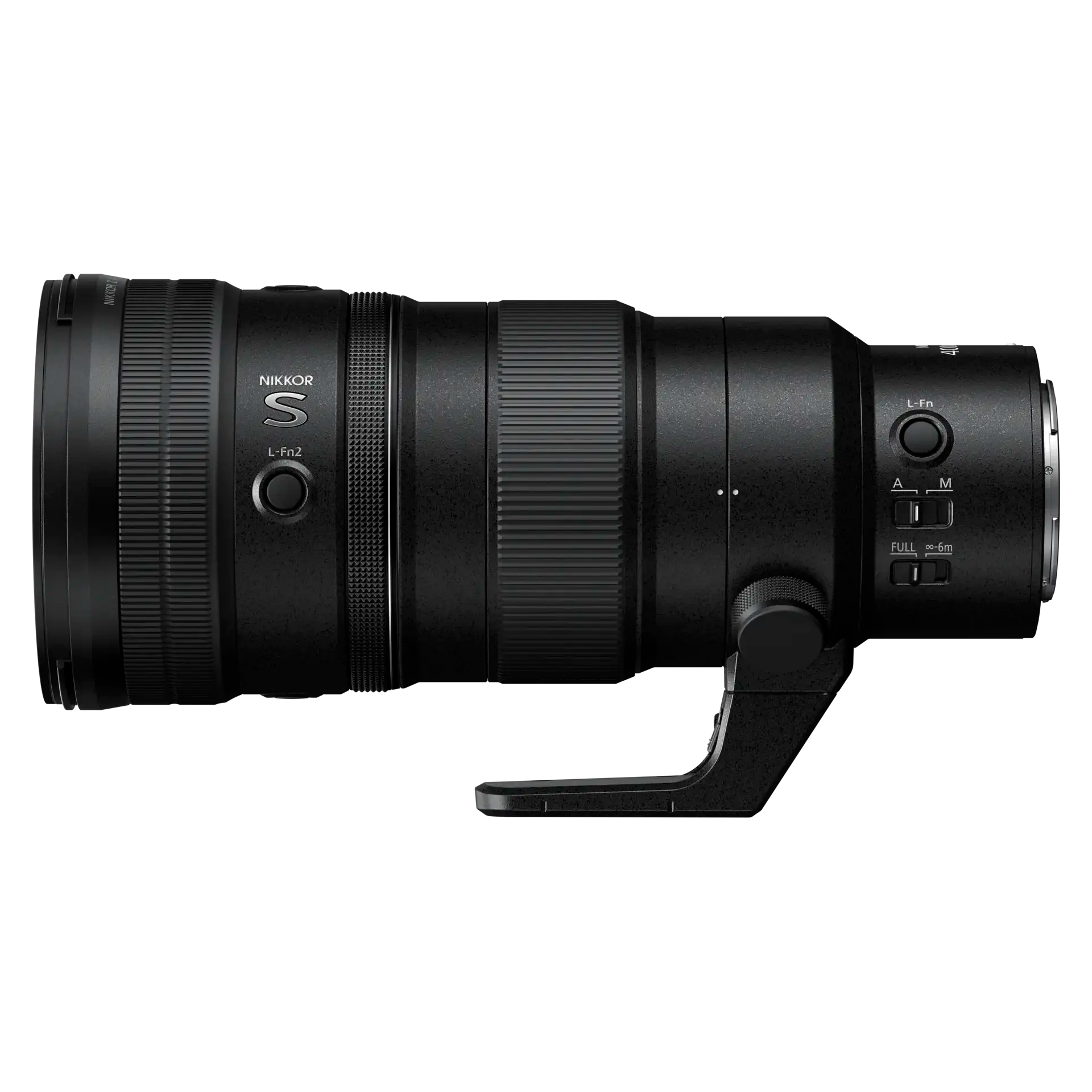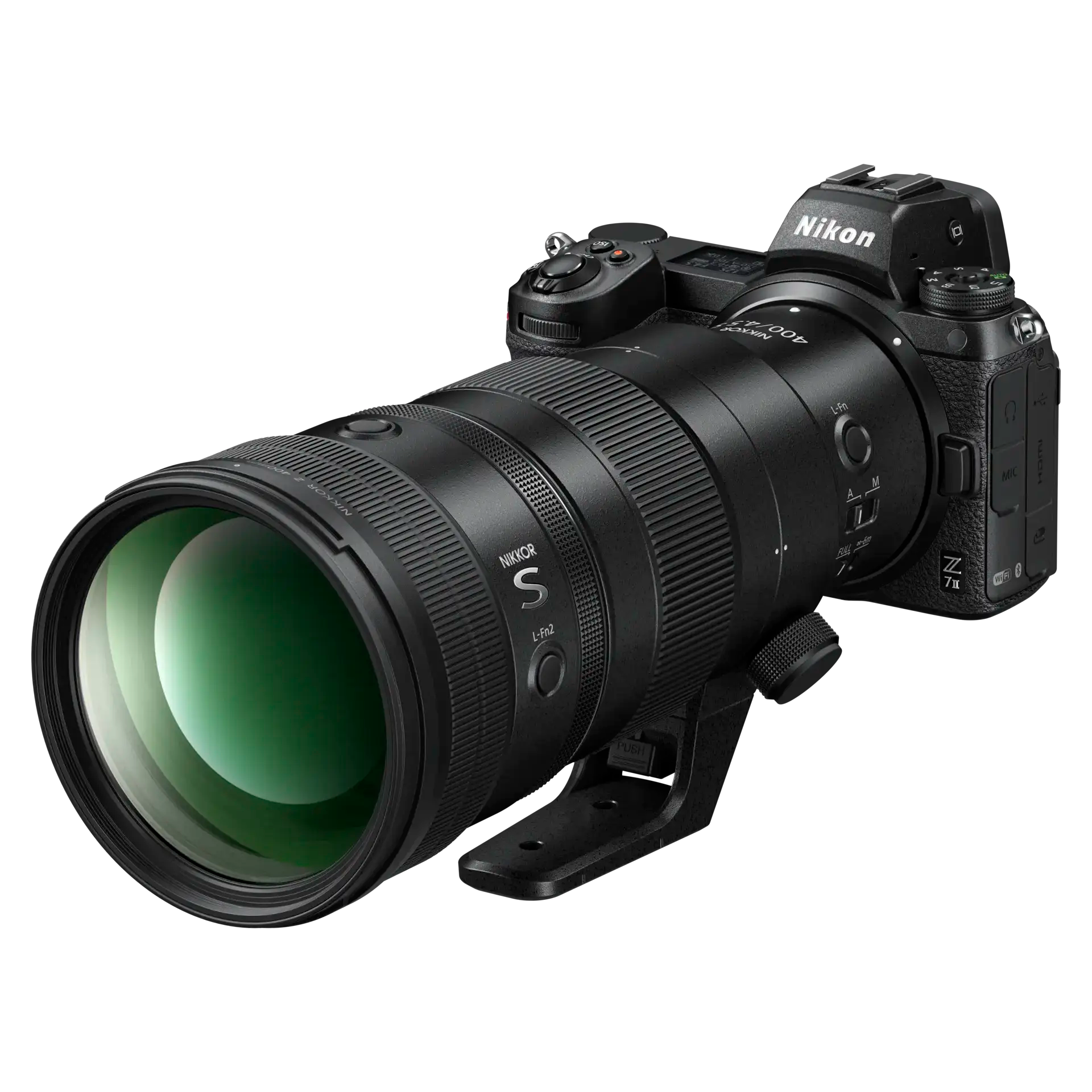Product Description
Nikon NIKKOR Z 400mm f/4.5 VR S Lens
The Nikon NIKKOR Z 400mm f/4.5 VR S is a super-telephoto prime lens designed for photographers who need reach, portability, and advanced optics in a compact form. Billed as "the smallest and lightest 400mm Nikon has ever created," it is ideal for wildlife, sports, and action photographers seeking a lens they can comfortably use handheld. Despite its long reach, the 400mm f/4.5 is incredibly nimble, combining high-performance autofocus and vibration reduction with a lightweight, travel-friendly design.

Key Features:
- Z-Mount Lens/Full-Frame Format: Optimized for full-frame Nikon Z-mount mirrorless cameras.
- Aperture Range: f/4.5 to f/32: Bright f/4.5 maximum aperture balances speed, size, and portability.
- Advanced S-Line Optics: Delivers sharpness, clarity, and accurate color rendering, minimizing aberrations and distortion.
- Vibration Reduction (VR) Image Stabilization: Up to 5.5 stops of stabilization for handheld shooting, with Synchro VR for up to 6 stops when paired with compatible cameras.
- Stepping Motor AF System: Quiet, fast autofocus performance ideal for both still photography and video.

Nimble Super-Telephoto Lens
The NIKKOR Z 400mm f/4.5 VR S is built for photographers who require long focal lengths but don't want to be weighed down by bulky gear. With a length of just 9.2" and a weight of 2.7 lb, it’s compact enough for travel and handheld shooting, giving you the flexibility to capture distant subjects with ease. Compared to the larger Z 400mm f/2.8, this f/4.5 version is 3.8 lb lighter and 6" shorter, making it the ideal option for photographers on the move.

S-Line Optics
Nikon's S-Line optics ensure high performance, even in challenging conditions. The optical design includes one ED (extra-low dispersion) element, two Super ED elements, and one SR (short-wavelength refractive) element to minimise chromatic aberrations, colour fringing, and comatic aberrations. The SR element is specially designed to refract shorter wavelengths (blue) for true-to-life colours and a more compact lens design. The lens is coated with Nano Crystal Coat, providing excellent anti-glare protection by reducing reflections, ghosting, and flare, even in harsh lighting conditions.

Autofocus and Vibration Reduction
The stepping motor AF system delivers smooth, fast, and accurate autofocus, while being quiet enough for video applications. The internal focusing design keeps the lens length constant during focusing, promoting faster performance and easier handling, especially in fast-paced environments. The lens also features Vibration Reduction (VR) image stabilization, which compensates for up to 5.5 stops of camera shake, enabling crisp images in low light and handheld situations. When paired with compatible cameras, Synchro VR boosts stabilization to 6 stops, combining in-body and lens-based stabilization for superior performance.

Professional Handling and Construction
The NIKKOR Z 400mm f/4.5 VR S is designed with professional handling in mind. The lens features a removable tripod foot for a slimmer, more portable profile during handheld use, and a rotating tripod mount for smooth transitions between horizontal and vertical shooting. The lens also boasts an intuitive, "no-look" control layout, ensuring that frequently used buttons and dials are easily accessible without taking your eye off the viewfinder.

Additional professional features include:
- Customizable L-Fn buttons: Two function buttons can be programmed for specific settings like subject tracking, AF lock, or image playback. The L-Fn2 button is placed in four locations on the barrel for easy access.
- Focus Limiter Switch: Restricts the focus range to 19.7' to infinity or the full range from 8.2' to infinity, speeding up focus performance for specific shooting scenarios.
- Programmable Control Ring: Customisable for aperture, ISO, or exposure compensation adjustments.
- Weather-Sealed Design: Built for durability in harsh environments, with rubber gaskets to prevent dust and moisture intrusion. The front element features a fluorine coating, which repels dirt and oil, making it easier to clean.
- Kensington Lock Compatibility: For securing the lens during remote or unattended shoots.
- Front 95mm Filters: Compatible with standard 95mm screw-in filters for further creative control.

Compact, Versatile, and Powerful
The Nikon NIKKOR Z 400mm f/4.5 VR S is an excellent choice for wildlife, sports, and action photographers who need the reach of a 400mm lens without the weight and bulk of larger telephoto lenses. Its compact design, advanced optics, and reliable autofocus and stabilization systems make it a versatile and powerful tool, capable of capturing distant subjects with incredible precision, whether shooting handheld or on a tripod.

Contents:
- Nikon NIKKOR Z 400mm f/4.5 VR S Lens
- Front Lens Cap
- Rear Lens Cap
- Tripod Foot
- Lens Hood
- Lens Case

This lens offers a perfect balance of portability, performance, and handling, making it a great option for photographers who need long telephoto reach without compromising on mobility or image quality.

Payment & Security
Your payment information is processed securely. We do not store credit card details nor have access to your credit card information.






















